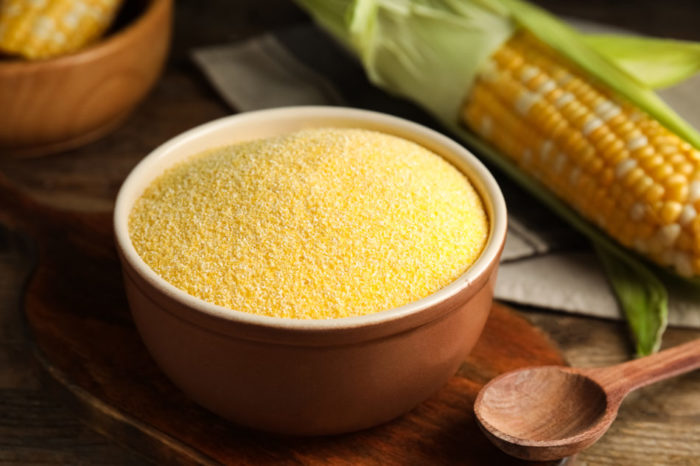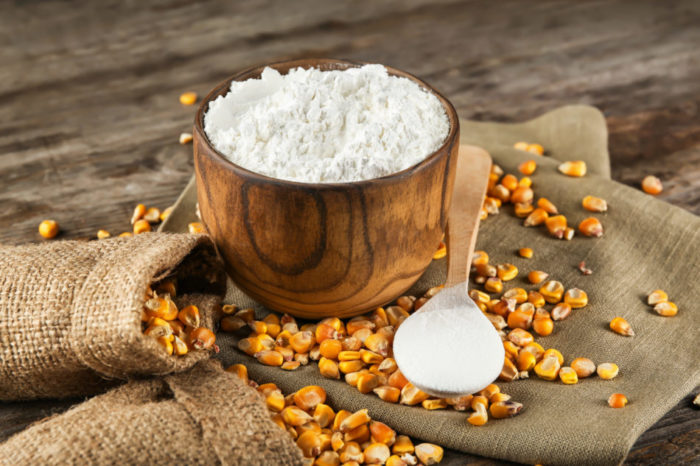What is the difference between corn meal vs corn starch? These are two very famous corn products, though they are very different, yet confusion persists in some cases about what these products are and what’s the best way to use them.
Of course, these are both corn products and are called upon by several recipes. Yet, the way they’re manufactured, processed and used is all different. Heck, they even have very different appearances.
So, let’s see what separates these two famous ingredients.
Cornmeal vs Cornstarch – The Key Points To Know
The Difference Between Cornstarch And Cornmeal
As we already know, these are very different products and have specific uses. Cornmeal comes from dried corn kernels that are then coarsely ground. It’s favored for recipes like polenta and cornbread.
Being coarsely ground is an important characteristic of cornmeal. This is one of the key points where people wonder is corn meal the same as corn flour? Once the corn meal is finely ground, it becomes corn flour. Both cornmeal and corn flour have a yellow color. Although this particular difference can be regional.
In the UK, for example, cornflour and cornstarch are the same thing. However, once a space is added, the corn flour refers to finely ground cornmeal, not corn starch!
Cornstarch is a starch obtained from the white endosperm at the heart of the corn kernel. It’s made almost entirely out of carbohydrates and has no nutritional value. The key uses of this fine white powder are as a thickener for sauces, stews, and gravies.
Cornstarch is gluten-free and devoid of any specific taste. The latter is a very desirable quality in a starch. Since its primary use is as a thickener, we should be able to add it to various recipes without worrying about the effects on taste. With the neutral taste of cornstarch, it becomes suitable for addition and use to a wide variety of recipes.
It’s worth remembering that cornstarch should not be added to hot food. The same goes for most starches. The proper way is to make a slurry with cold water and add that to the recipe. This avoids clumping and makes the starch more effective.
What Is Corn Meal?

Corn meal or cornmeal, comes from dried corn kernels. Harvested corn is dried and then the kernels are removed. These kernels are then ground into a somewhat coarse grain. This is cornmeal. A key characteristic here is that the grind should be coarse. If it is too fine, the resultant product is corn flour.
What Is Corn Starch?

Cornstarch comes from the endosperm of the corn kernel. This is the white part inside each individual corn kernel. The extract is refined and is available as a fine white powder, which is known as corn starch. Starch is mostly made of carbohydrates and doesn’t have much nutritional value. It’s also quite neutral in taste, which makes it suitable for addition to various recipes.
FAQ And Related Topics
Are Corn Meal And Corn Starch The Same?
In the US and most countries, there is a clear distinction between corn meal and corn starch. The difference is clearly visible and is evident in specific properties of each ingredient.
Corn meal has a yellow color and is coarsely ground. Meanwhile, Corn starch is a fine, white powder.
Some confusion might exist on these counts because of the way they’re handled in the UK. Finely ground cornmeal is corn flour or cornflour in the US. However, in the UK, the definition undergoes a change. There, finely ground cornmeal is corn flour, while cornflour is the same as cornstarch.
It’s a small distinction, but cookbooks do travel and sometimes a misread can ruin an entire recipe.
Can I Substitute Cornmeal for Cornstarch?
There are some specific cases where cornmeal can work as a substitution for cornstarch. Due to its coarse texture, cornmeal isn’t good for use as a thickener, which is a key function of cornstarch.
However, cornstarch is often used for frying as well, where it’s added to wet batter so that it will stick better and keep intact during deep frying. In such uses, you can replace cornstarch with cornmeal and use the latter to hold the batter. Corn meal works fabulously in this setting and creates a wonderful batter for deep frying.
What Are The Nutritional Benefits Of Cornmeal?
Cornmeal is a popular item that’s used around the world. It is nutritious and provides several important vitamins and minerals. Each half-cup (61g) of whole-grain cornmeal contains 5g fiber, 4.9g protein, and significant amounts of magnesium, phosphorus, and potassium are available as well.
This is a carbohydrate-rich food and contains 47 g of carbs. It’s also considered a good source of Vitamin B6, folate, and selenium. Cornmeal is naturally gluten-free.
However, it is something to watch out for those suffering with diabetes. Cornmeal has a Glycemic Index (GI) of around 68-69. This number is a bit on the higher side and those suffering from diabetes should exercise caution in eating cornmeal or cornflour based products.
What Are The Nutritional Benefits Of Cornstarch?
As a starch, cornstarch is rich in carbohydrates but it doesn’t offer any other nutritional benefits. It’s pretty much devoid of taste, flavor, or any specific nutrition. Being rich in carbohydrates may sometimes be seen as a quick source of energy, though its use in cornstarch is rarely useful for a normal diet.
Cornstarch is naturally gluten-free.
The Bottom Line – Corn Meal vs Corn Starch
While they have the same origin and similar names, the distinction between corn meal and corn starch is rather obvious and clear. Cornmeal has a coarse texture, yellow color, and is rich in nutrition. On the other hand, cornstarch is a white-colored fine powder, which is usually just carbs.
Both these products are naturally gluten-free, though they have very different culinary uses. Though there are some scenarios where corn meal could be substituted for cornstarch, generally speaking, these items should not be used interchangeably.
